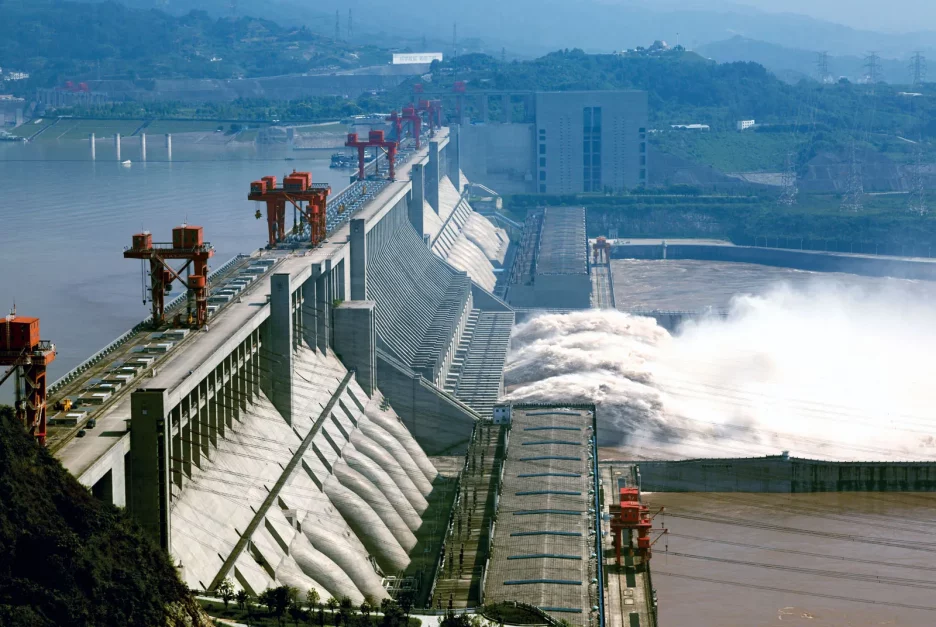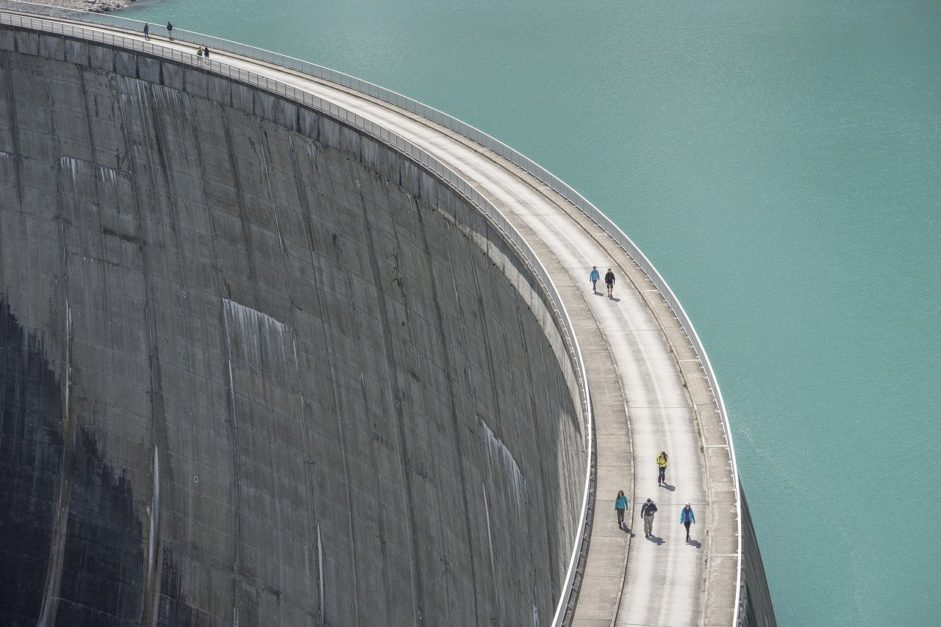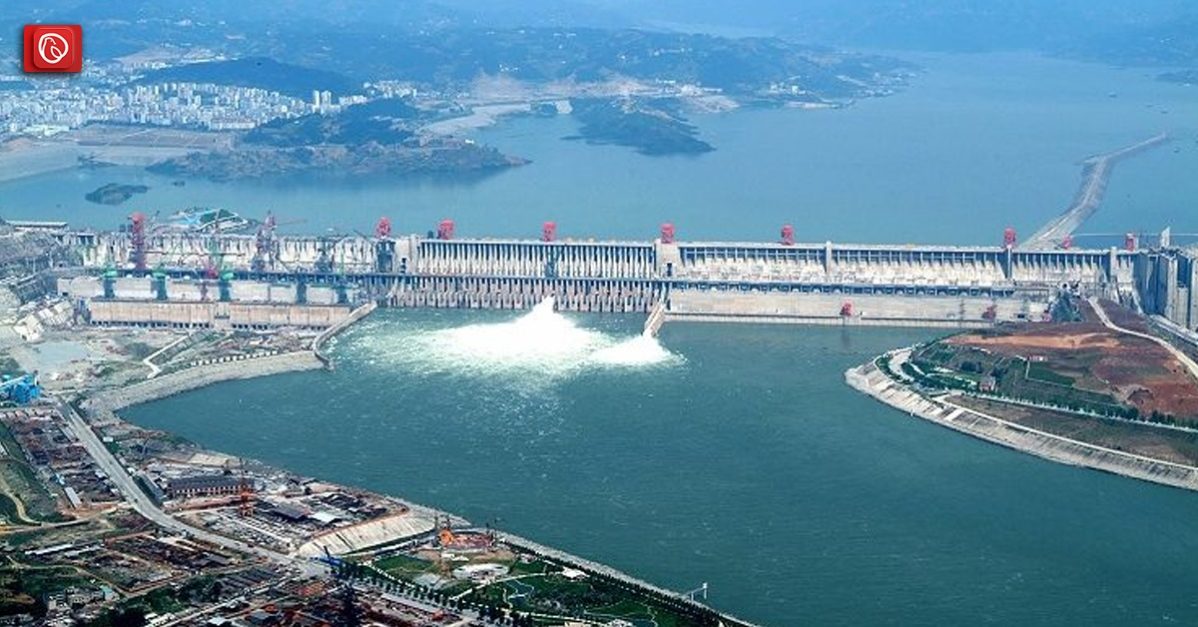The Three Gorges Dam is a massive hydroelectric project that spans the Yangtze River and has a total capacity of 22.5 gigawatts (GW), which is enough to power millions of homes and businesses. Graana.com provides a detailed overview of the world’s largest dam below, including its history, benefits, challenges and more.
History of the Three Gorges Project

The idea of building a dam on the Yangtze River first came about in the early 20th century, when Sun Yat-sen, the founder of modern China, proposed it as a way to improve navigation and flood control. However, it was not until 1992 that the Chinese government officially approved the project after decades of debate and feasibility studies.
The construction began in 1994 and was completed in 2012, involving more than 40,000 workers and costing over $30 billion. The project was divided into three phases:
Phase I (1994-1997)
The main river channel was diverted through two temporary cofferdams on both sides of the dam site. The dam’s foundation was laid down, and the first five spillway gates were installed.
Phase II (1998-2006)
The main body of the dam was built up to its full height of 181 metres (594 feet). The remaining spillway gates were installed, and the ship locks and ship lift were constructed.
Phase III (2006-2012)
The reservoir was filled to its average level of 175 metres (574 feet). The last six turbines and generators were installed and connected to the grid.
List of World’s Largest Dams
The following is a list of the world’s largest dams.
| Dam | Location | Volume (thousands) | Year of Completion | |
| cu m | cu yds | |||
| Three Gorges | China | 39,300,000 | 51,402,459 | UC08 |
| Syncrude Tailings | Canada | 540,000 | 706,320 | UC |
| Chapetón | Argentina | 296,200 | 387,410 | UC |
| Pati | Argentina | 238,180 | 274,026 | UC |
| New Cornelia Tailings | United States | 209,500 | 274,026 | 1973 |
| Tarbela | Pakistan | 121,720 | 159,210 | 1976 |
| Kambaratinsk | Kyrgyzstan | 112,200 | 146,758 | UC |
| Fort Peck | Montana | 96,049 | 125,628 | 1940 |
| Lower Usuma | Nigeria | 93,000 | 121,644 | 1990 |
| Cipasang | Indonesia | 90,000 | 117,720 | UC |
| Atatürk | Turkey | 84,500 | 110,522 | 1990 |
| Yacyretá-Apipe | Paraguay/Argentina | 81,000 | 105,944 | 1998 |
| Guri (Raúl Leoni) | Venezuela | 78,000 | 102,014 | 1986 |
| Rogun | Tajikistan | 75,500 | 98,750 | 1985 |
| Oahe | South Dakota | 70,339 | 92,000 | 1963 |
| Mangla | Pakistan | 65,651 | 85,872 | 1967 |
| Gardiner | Canada | 65,440 | 85,592 | 1968 |
| Afsluitdijk | Netherlands | 63,400 | 82,927 | 1932 |
| Oroville | California | 59,639 | 78,008 | 1968 |
| San Luis | California | 59,405 | 77,700 | 1967 |
| Nurek | Tajikistan | 58,000 | 75,861 | 1980 |
| Garrison | North Dakota | 50,843 | 66,500 | 1956 |
| Cochiti | New Mexico | 48,052 | 62,850 | 1975 |
| Tabka (Thawra) | Syria | 46,000 | 60,168 | 1976 |
| Bennett W.A.C. | Canada | 43,733 | 57,201 | 1967 |
| Tucuruíi | Brazil | 43,000 | 56,242 | 1984 |
| Boruca | Costa Rica | 43,000 | 56,242 | UC |
| High Aswan (Sadd-el-Aali) | Egypt | 43,000 | 56,242 | 1970 |
| San Roque | Philippines | 43,000 | 56,242 | UC |
| Kiev | Ukraine | 42,841 | 56,034 | 1964 |
| Dantiwada Left Embankment | India | 41,040 | 53,680 | 1965 |
| Saratov | Russia | 40,400 | 52,843 | 1967 |
| Mission Tailings 2 | Arizona | 40,088 | 52,435 | 1973 |
| Fort Randall | South Dakota | 38,227 | 50,000 | 1953 |
| Kanev | Ukraine | 37,860 | 49,520 | 1976 |
| Mosul | Iraq | 36,000 | 47,086 | 1982 |
| Kakhovka | Ukraine | 35,640 | 46,617 | 1955 |
| Itumbiara | Brazil | 35,600 | 46,563 | 1980 |
| Lauwerszee | Netherlands | 35,575 | 46,532 | 1969 |
| Beas | India | 35,418 | 46,325 | 1974 |
| Oosterschelde | Netherlands | 35,000 | 45,778 | 1986 |
Benefits of the Three Gorges Dam

This world’s largest dam has many benefits for the people and the environment, such as:
Flood Control
It can store excess water from the upper stream and release it gradually, preventing devastating floods that used to plague the lower regions. It can also withstand severe floods that happen once a century.
Power Generation
It is the world’s largest hydropower station, with a total capacity of 22.5 million kilowatts and an annual power generation of 100 billion kilowatt hours. It supplies electricity to many provinces in central, eastern and southern China, reducing their reliance on fossil fuels and greenhouse gas emissions.
Navigation
It raises the water level in the upper stream and improves the waterway conditions from Chongqing to Yichang (a distance of 660 kilometres). This dam allows ships of up to 10,000 tons to sail directly between Chongqing and Shanghai, boosting trade and commerce. It also has a ship lift and a five-tier ship lock system to help vessels bypass the dam quickly and safely.
Drought Resistance and Water Supplementation
It can regulate the water flow in the lower stream and provide sufficient water supply for irrigation, industry and domestic use. It can also help fight against droughts by releasing water from the reservoir when needed.
Tourism
The dam is a spectacular sight that attracts millions of visitors every year. It also preserves the natural beauty and cultural heritage of the Three Gorges region, which is rich in scenery, history and folklore.
Challenges and Controversies of the Three Gorges Dam
Despite its benefits, the dam also faces many challenges and controversies.
Environmental Impact
One of the main issues is the environmental impact of the project, which has altered the natural ecosystem of the river and its surroundings. It has caused habitat loss and fragmentation for many wildlife species, such as the endangered Yangtze finless porpoise and the Chinese sturgeon.
It has also increased the risk of landslides, earthquakes and sedimentation in the reservoir area. Furthermore, the project has displaced more than 1.3 million people from their homes and has caused damage to cultural heritage sites, raising social and ethical concerns.
Economic Viability
Another issue is the economic viability and sustainability of the project, which has been questioned by some experts and critics. Some argue that the project is too costly and inefficient compared to other energy sources, such as wind and solar power.
Some also doubt that it can deliver its promised benefits in terms of flood control and navigation, given the uncertainties of climate change and water demand. Moreover, there is some concern that the project may pose a security threat in case of sabotage or natural disasters.
Political and Social Controversies
The project has been criticised by many domestic and international groups for violating human rights, environmental standards, and cultural values. Some opponents of the project have accused the Chinese government of suppressing dissent and ignoring public opinion in favour of economic development and national prestige.
Some have also questioned the safety and efficiency of the dam, especially after several incidents of corruption, accidents, and malfunctions have been reported. On the other hand, supporters of the project have defended its benefits and achievements, such as reducing greenhouse gas emissions, improving flood control, and boosting regional development.
Conclusion
The Three Gorges Dam is a remarkable achievement that showcases China’s engineering prowess and ambition. It has brought many benefits to the country’s economy, society and environment. However, it has also created many challenges and controversies that need to be addressed carefully and responsibly.
FAQs
What is the Three Gorges Dam?
It is a hydroelectric dam located on the Yangtze River in China. It is the world’s largest power station in terms of installed capacity.
When was the Three Gorges Dam constructed?
Its construction began in 1994 and was completed in 2012.
What is the purpose of the Three Gorges Dam?
It has been primarily built to generate hydroelectric power, reduce flooding, and improve navigation along the Yangtze River.
How tall is the Three Gorges Dam?
It is 181 metres tall, making it one of the tallest dams in the world.
What is the installed capacity of the Three Gorges Dam?
The installed capacity of the dam is 22,500 megawatts.
What is the environmental impact of the Three Gorges Dam?
The construction of the dam has led to significant effects on the environment, including the loss of habitats and biodiversity, soil erosion, and water pollution. There are also concerns about the potential for dam failure and the release of large amounts of water.
What is the social and economic impact of the Three Gorges Dam?
Its social and economic effects on the region include the displacement of over one million people, the loss of cultural heritage sites, and changes in the local economy.
What are some of the controversies surrounding the Three Gorges Dam?
There are concerns about the dam’s environmental and social impact, its cost-effectiveness, and the potential for dam failure. There has also been criticism about the lack of transparency in the decision-making process for the dam’s construction.
Follow Graana.com for more information.




